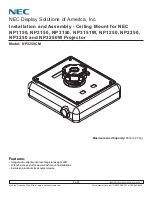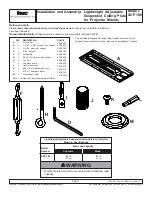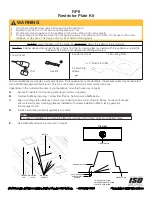
Air Lift 1000
10
1. Check the air pressure weekly.
2. Always maintain normal ride height. Never inflate beyond 35 PSI or 50 PSI as noted in
above chart.
3. If the system develops an air leak, use a soapy water solution to check all air line
connections and the inflation valve core, before deflating and removing the spring.
4. When increasing load, always adjust the air pressure to maintain normal ride height.
Increase or decrease pressure from the system as necessary to attain normal ride
height for optimal ride and handling. Remember that loads carried behind the axle
(including tongue loads) require more leveling force (pressure) than those carried
directly over the axle.
FOR SAFETY AND TO PREVENT DAMAGE TO THE VEHICLE, DO NOT EXCEED
MAXIMUM GROSS VEHICLE WEIGHT RATING (GVWR), AS INDICATED BY THE
VEHICLE MANUFACTURER. ALTHOUGH YOUR AIR SPRINGS ARE RATED AT A
MAXIMUM INFLATION PRESSURE OF 35 PSI OR 50 PSI, THE AIR PRESSURE
ACTUALLY NEEDED IS DEPENDENT ON LOAD AND GVWR.
5. If using Schrader valves, always add air to the springs in small quantities, checking
the pressure frequently. Cylinders require less air volume than a tire and inflate
quickly.
6. Should it become necessary to raise the vehicle by the frame, make sure the
system is at a minimum pressure (5 PSI) to reduce tension on the suspension/brake
components.
OPERATING TIPS
1. Inflate the air springs to 30 PSI before adding the payload. This will allow the air
cylinder to properly mesh with the coil spring. After the vehicle is loaded, adjust the air
pressure down to level the vehicle and for ride comfort.
2. When carrying a payload it will be helpful to increase the tire inflation pressure in
proportion to any overload condition. Air Lift Company recommends a 2 PSI increase
above normal for each 100 pounds additional load on the axle.
F. Product Use, Maintenance and Servicing
CAUTION
5 PSI
35 PSI
Maximum Air Pressure
Minimum Recommended Pressure































